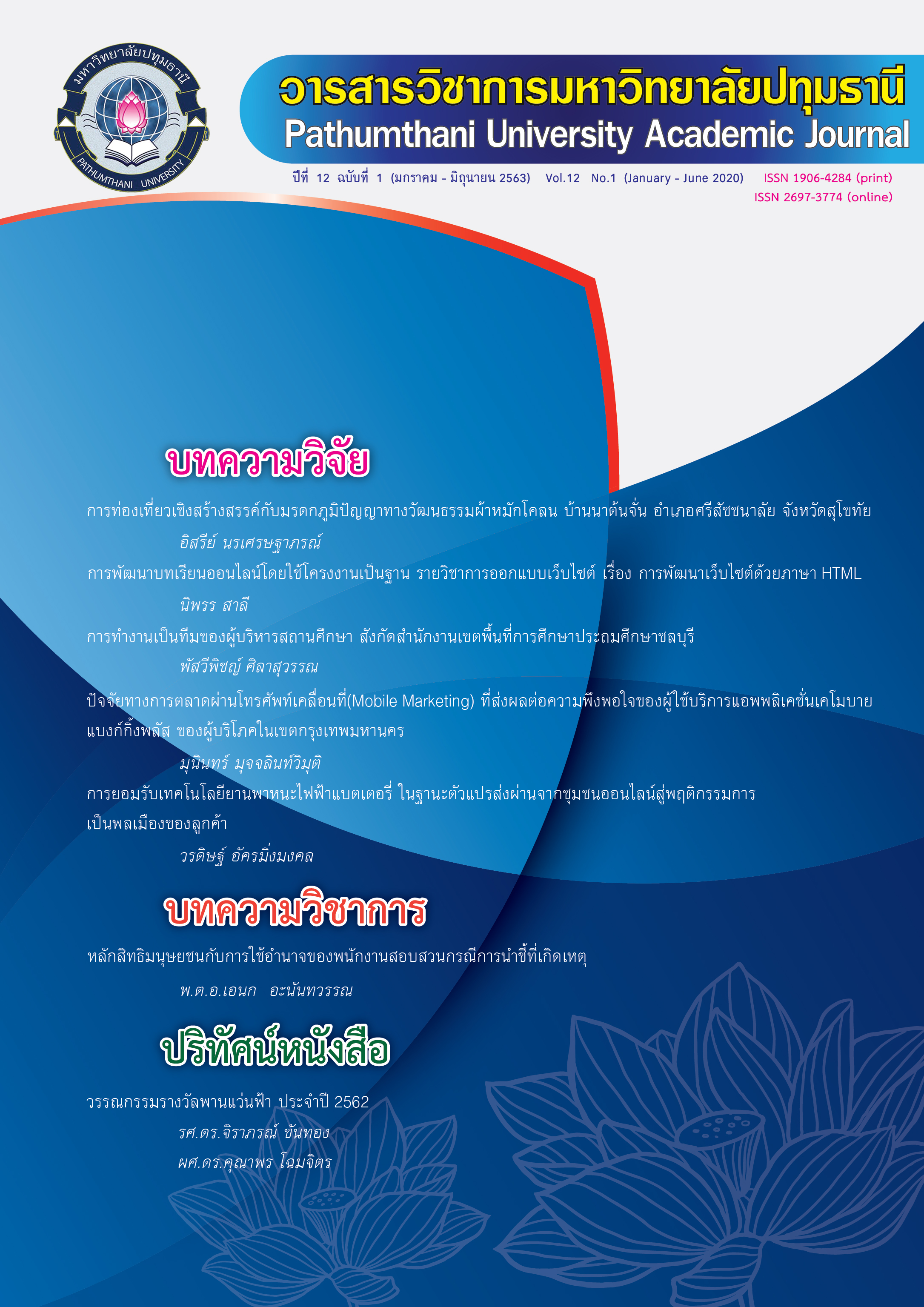SOURCE CREDIBILITY AND SOURCE ATTRACTIVNESS OF INFLUENCERS EDNDORSING BRAND EVALUATION TO RUNNING SHOE OF CONSUMERS
Keywords:
Influencers, Source Credibility, Source Attractiveness, Brand EvaluationAbstract
The objectives of this study aimed 1) To study the factor of source credibility of the influencer 2) To study brand evaluation to running shoes 3) To study Source credibility of the influencers that endorse on brand evaluation to running shoes of consumers. Four hundred questionnaires were distributed to collect data and convenience sampling technique was used in this study. The data was analyzed by using frequency, percentage, mean and standard deviations. Test of hypotheses was performed by multiple regression analysis at a .05 statistical significance level. The result of the study shown that source credibility of the influencers in the attractiveness, familiarity, trustworthiness and expertise factors endorse on brand evaluation to running shoes at a .05 statistical significance level. The study shown that similarity and likeability factors do not endorse on brand evaluation to running shoes of consumers.
References
ณัฏฐา อุ่ยมานะชัย. (2556). “ผู้ทรงอิทธิพลในโลกออนไลน์กับพลังการบอกต่อการสร้างกระแสโน้มน้าวใจผู้บริโภค”. วารสารนักบริหาร. 33(3), 47-51.
ปฐมาพร เนตินันทน์. (2554). “การสังเคราะห์กระบวนการและกลยุทธ์การสร้างตราสินค้า”. Executive Journal. 11, 36-50.
ภัสสรนันท์ อเนกธรรมกุล. (2553). ผลกระทบจากการใช้บุคคลที่มีชื่อเสียง (Celebrity) ที่เป็นผู้นำเสนอสินค้าหลากหลายตราสินค้าในงานโฆษณา. วิทยานิพนธ์ปริญญาวิทยาศาสตรมหาบัณฑิต. สาขาวิชาการบริหารการตลาด. มหาวิทยาลัยธรรมศาสตร์.
วิทวัส รุ่งเรืองผล. (2553). หลักการตลาด Principle of Marketing. กรุงเทพมหานคร : โรงพิมพ์มหาวิทยาลัยธรรมศาสตร์.
ศศิมา อุดมศิลป์. (2557). กลยุทธ์การสื่อสารการตลาดโดยใช้ผู้ทรงอิทธิพลออนไลน์ในธุรกิจร้านอาหาร. วิทยานิพนธ์ปริญญานิเทศศาตรมหาบัณฑิต. สาขาวิชานิเทศศาสตร์. จุฬาลงกรณ์มหาวิทยาลัย.
อรนิตย์ เอ่งฉ้วน และ พีรยุทธ โอรพันธ์. (2557). กลยุทธ์การสื่อสารการตลาดผ่านกลุ่มผู้นำทางความคิดในกลุ่มสังคมออนไลน์ของบริษัท เดอะมอลล์กรุ๊ป จำกัด. การค้นคว้าอิสระ ปริญญาวารสารศาสตรมหาบัณฑิต. สาขาวิชาการบริหารสื่อสารมวลชน. มหาวิทยาลัยธรรมศาสตร์.
Abhishek Dwivedi, Robert E. McDonald and Lester W. Johnson. (2014). “The impact of a celebrity endorser’s credibility on consumer self-brand connection and brand evaluation”. Journal of Brand Management. 21, 559-578.
Erdogan, B. Z. (1999). “Celebrity endorsement: A literature review”. Journal of Marketing Management. 15(4), 291–314.
Farooq, F. and Z. Jan. (2012). “The impact of social networking to influence marketing through product reviews”. International Journal of Information and Communication Technology Research. 2(8), 627-637.
McCracken, G. (1989). “Who is the Celebrity Endorser? Cultural Foundations of the Endorsement Process”. Journal of Consumer Research. 16, 310-321.
Ohanian, R. (1990). “Construction and validation of a scale to measure celebrity endorsers’ perceived expertise, trustworthiness, and attractiveness”. Journal of Advertising. 19(3), 39–52.
Vogel, V., H. Evanschitzky, and B. Ramaseshan. (2008). “Customer-equity drivers and future Sales”. Journal of Marketing. 72(6), 98–108.
Downloads
Published
How to Cite
Issue
Section
License
บทความที่ได้รับการตีพิมพ์เป็นลิขสิทธิ์ของวารสารมหาวิทยาลัยปทุมธานี
ข้อความที่ปรากฎในบทความแต่ละเรื่อง เป็นความคิดเห็นส่วนตัวของผู้เขียน กองบรรณาธิการไม่จำเป็นต้องเห็นด้วยเสมอไป และไม่มีส่วนรับผิดชอบใด ๆ ถือเป็นความรับผิดชอบของผู้เขียนแต่เพียงผู้เดียว



